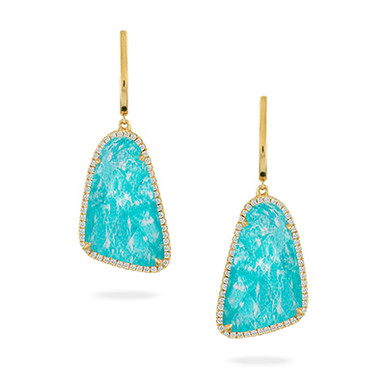Amazonite, a captivating gemstone, is celebrated for its stunning green and blue-green hues reminiscent of the lush Amazon rainforest, from which it derives its name. However, despite its name, significant deposits of amazonite have not been found in the Amazon region; rather, it is sourced primarily from places like Russia, Madagascar, Brazil, and the United States. This striking mineral is a variety of microcline feldspar and is known for its vitreous luster and captivating color, which can range from light green to deep blue-green. Its aesthetic appeal and relative abundance make it a popular choice among jewelers and collectors alike.
The unique coloration of amazonite is due to trace amounts of lead and water within the mineral structure, creating its characteristic soft, verdant tones that are often compared to jade. Beyond its visual allure, amazonite is believed to possess metaphysical properties. Many enthusiasts and practitioners of crystal healing tout amazonite as a stone of harmony, balance, and soothing energy. It is said to calm the nervous system, enhance communication, and foster compassion by alleviating fear and anxiety. These attributes contribute to its widespread use in various forms of jewelry, from pendants and beads to cabochons and ornamental pieces.
In addition to its aesthetic and metaphysical qualities, amazonite has a rich historical background. Ancient civilizations, including the Egyptians, valued amazonite for its beauty and purported protective qualities. It was often used in amulets, jewelry, and carvings, with some notable artifacts including pieces from the tomb of King Tutankhamun. Today, amazonite continues to be cherished for its timeless beauty and the sense of tranquility it is believed to bring to its wearers. Whether appreciated for its visual appeal or its spiritual significance, amazonite remains an enchanting gemstone that captivates the hearts and minds of those who encounter it.

